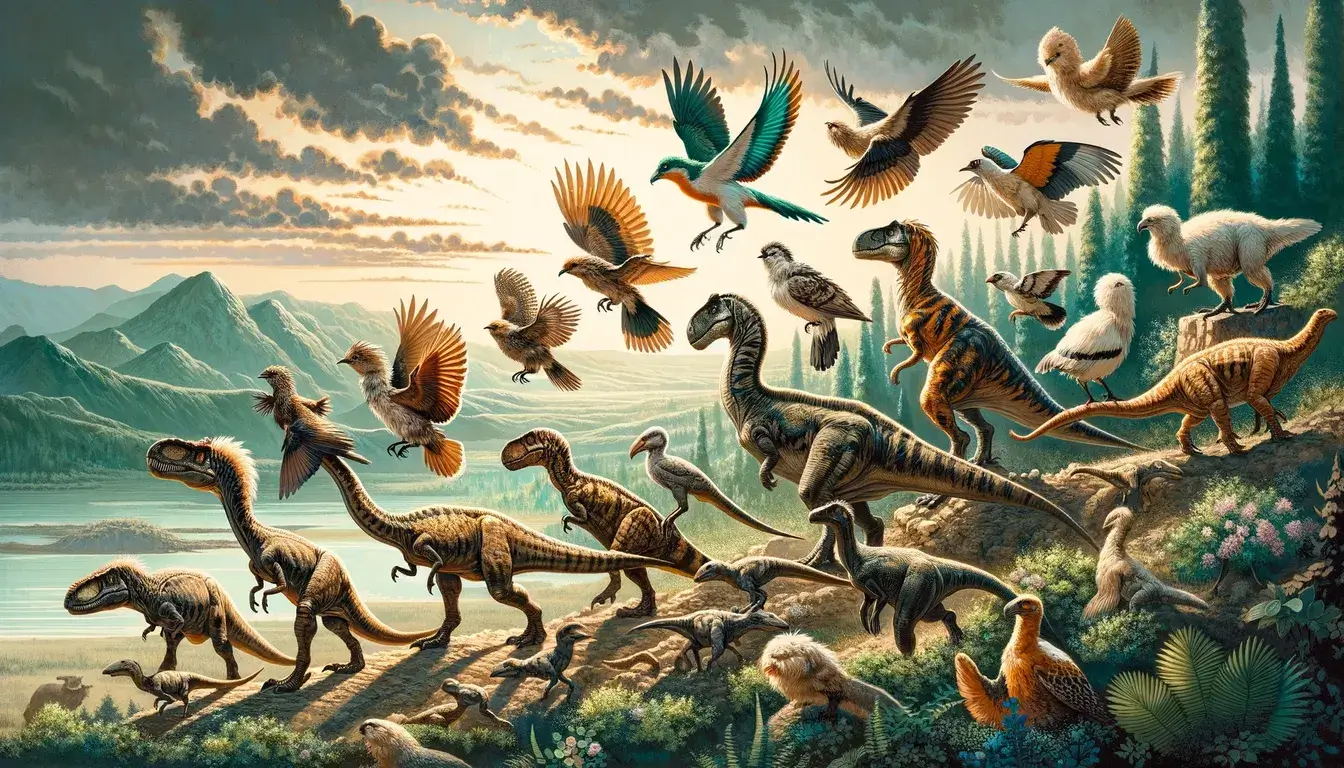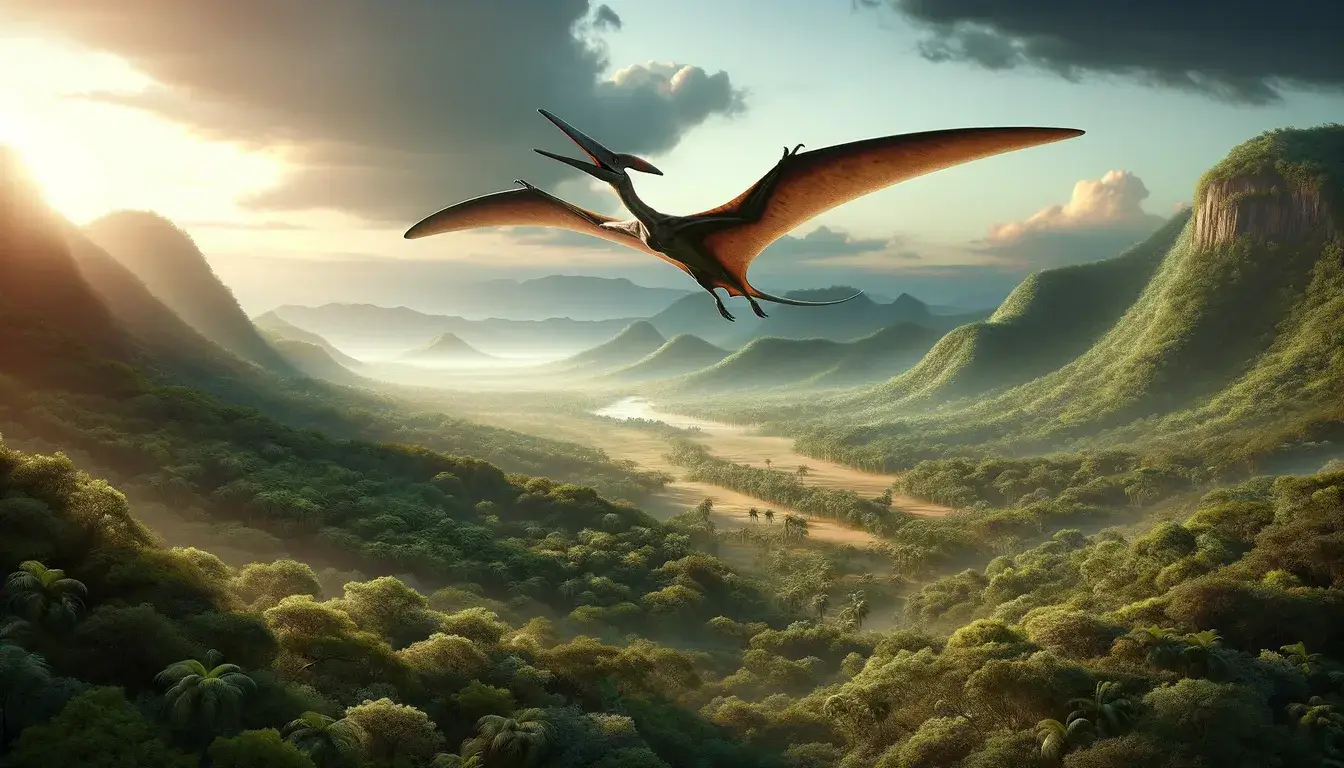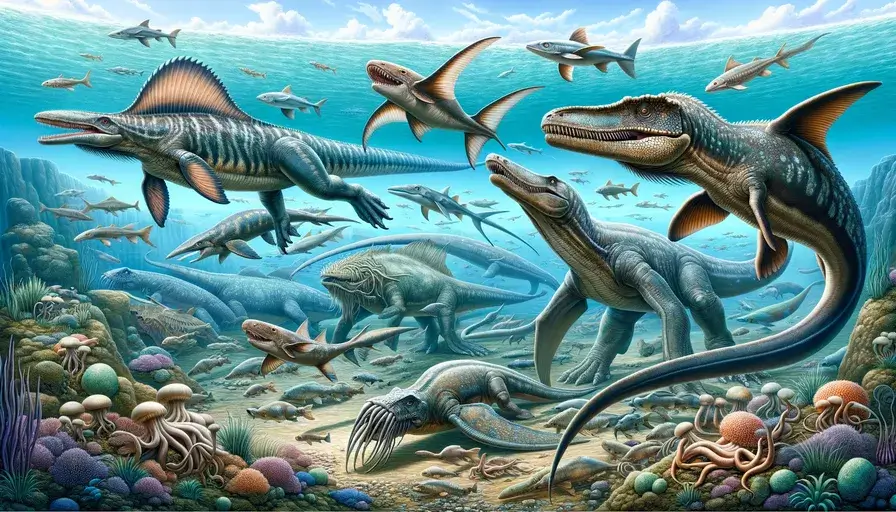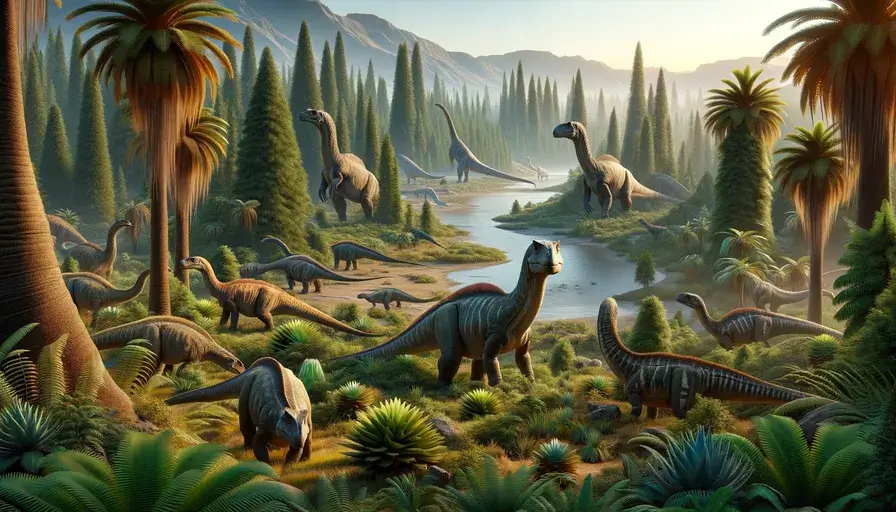Picture this: you’re walking through a lush, green landscape. The air is warm and humid, and the sounds of chirping birds and buzzing insects fill your ears. But as you look closer, you realize that these aren’t just any ordinary birds and insects. They’re the descendants of some of the most fascinating creatures to ever walk the Earth – the dinosaurs of the Late Cretaceous period.
In this article, we’ll take a journey back in time to explore the world of the Late Cretaceous, a time when dinosaurs ruled the land, sea, and air. We’ll discover the incredible diversity of these ancient creatures, learn about the environment they lived in, and investigate the theories behind their ultimate demise.
The Late Cretaceous Environment
Before we meet the stars of the show – the dinosaurs – let’s set the stage by exploring what their world looked like. The Late Cretaceous period, spanning from approximately 100 to 66 million years ago, was a time of significant changes on Earth. This era witnessed the rise of new dinosaur species, the evolution of flowering plants, and the gradual breakup of continents, setting the scene for a fascinating chapter in our planet’s history.
Climate and Geography
The Late Cretaceous was characterized by a generally warm and humid climate, with average global temperatures higher than those of today. This “greenhouse” climate was largely due to elevated levels of atmospheric carbon dioxide, which trapped heat and prevented the formation of permanent polar ice caps. As a result, dinosaurs and other animals were able to thrive in regions that are much colder today, such as Antarctica and Alaska.
During this time, the Earth’s continents were arranged differently than they are now, with two major landmasses dominating the globe:
- Laurasia: This supercontinent consisted of what is now North America, Europe, and Asia, connected by land bridges that allowed dinosaurs and other animals to migrate between these regions.
- Gondwana: In the southern hemisphere, the continents of South America, Africa, India, Australia, and Antarctica were joined together in a vast supercontinent called Gondwana. This landmass was home to a diverse array of dinosaurs and other prehistoric life forms.
As the Late Cretaceous progressed, these supercontinents began to break apart due to tectonic activity, causing significant changes in global geography and climate.
Vegetation and Ecosystems
The warm, humid climate of the Late Cretaceous supported a lush and diverse vegetation, with a wide range of plant life thriving across the globe. One of the most significant botanical developments of this era was the evolution and rapid spread of flowering plants, or angiosperms. These plants, which first appeared during the Early Cretaceous, diversified and became dominant in many ecosystems by the Late Cretaceous.

Some of the most iconic Late Cretaceous ecosystems include:
| Ecosystem | Characteristics |
|---|---|
| Coastal Swamps | – Lush vegetation, including ferns, cycads, and early angiosperms – Shallow waters teeming with fish, turtles, and crocodilians – Humid, subtropical climate |
| Inland Forests | – Towering conifers, such as redwoods and pines – Understory of ferns, cycads, and flowering plants – Diverse dinosaur fauna, including sauropods, theropods, and ornithopods |
| Grasslands | – Not as extensive as modern grasslands, but still present in some areas – Supported herds of plant-eating dinosaurs, such as hadrosaurs and ceratopsians – Home to smaller, fleet-footed theropods and early mammals |
| River Systems | – Winding waterways lined with lush vegetation – Housed aquatic and semi-aquatic animals, such as fish, turtles, and crocodilians – Attracted diverse dinosaur fauna, including sauropods and theropods |
| Coastal Plains | – Flat, low-lying areas near the ocean – Supported a mix of vegetation, including early grasses, ferns, and flowering plants – Home to a wide range of dinosaurs, from small ornithopods to massive sauropods |
These varied ecosystems provided habitats for an incredible diversity of life, from tiny insects to colossal dinosaurs.
The lush forests, sprawling grasslands, and winding river systems of the Late Cretaceous set the stage for the rise of some of the most iconic dinosaurs in Earth’s history.
Dinosaur Diversity
The Late Cretaceous was a golden age for dinosaurs, with an incredible variety of species thriving across the globe. From tiny, feathered creatures to massive, long-necked behemoths, these animals came in all shapes and sizes. Let’s take a closer look at some of the most notable dinosaur groups of this time.
Tyrannosaurs
When most people think of Late Cretaceous dinosaurs, the first one that comes to mind is often Tyrannosaurus rex. This iconic predator, which could grow up to 40 feet long and weigh around 8 tons, was at the top of the food chain in North America.
However, T. rex was just one of many tyrannosaur species that lived during the Late Cretaceous:
- Albertosaurus: A smaller relative of T. rex, found in what is now western North America.
- Tarbosaurus: A large tyrannosaur that lived in Asia, similar in size to T. rex.
- Daspletosaurus: Another North American tyrannosaur, known for its robust skull and powerful bite.

Ceratopsians
Ceratopsians, or horned dinosaurs, were a group of plant-eating dinosaurs that lived during the Late Cretaceous. They were characterized by their ornate skulls, which often featured horns, frills, and other decorative structures.
Some well-known ceratopsians include:
- Triceratops: Perhaps the most famous ceratopsian, with its distinctive three-horned skull and bony frill.
- Styracosaurus: Known for its long, spiky frill and single nose horn.
- Pachyrhinosaurus: A unique ceratopsian with a thick, bony boss on its nose instead of a horn.
Hadrosaurs
Hadrosaurs, also known as duck-billed dinosaurs, were another diverse group of plant-eaters that thrived during the Late Cretaceous. They had complex tooth batteries that allowed them to efficiently grind tough vegetation, and some species had elaborate crests on their skulls.
Notable hadrosaurs include:
- Parasaurolophus: Known for its long, curved crest, which may have been used for communication or display.
- Edmontosaurus: A large hadrosaur that could grow up to 40 feet long and weigh around 4 tons.
- Lambeosaurus: Another crested hadrosaur, with a distinctive hatchet-shaped crest.

Other Notable Dinosaurs
While tyrannosaurs, ceratopsians, and hadrosaurs were some of the most iconic dinosaur groups of the Late Cretaceous, there were many other fascinating species that lived during this time:
- Ankylosaurus: A heavily armored dinosaur with a club-like tail, used for defense against predators.
- Quetzalcoatlus: A giant pterosaur (flying reptile) with a wingspan of over 30 feet, one of the largest flying animals of all time.
- Velociraptor: A small, feathered, bird-like dinosaur, known for its sharp claws and intelligent behavior.
These are just a few examples of the incredible diversity of dinosaurs that lived during the Late Cretaceous. As we continue to study fossils from this time period, we’re constantly discovering new species and learning more about the ones we already know.
Theories on Dinosaur Extinction
As we’ve seen, the Late Cretaceous was a time of great success and diversity for dinosaurs. However, this golden age came to an abrupt end around 66 million years ago, when a mass extinction event wiped out most of the world’s dinosaurs (except for birds). But what caused this catastrophic event? Let’s explore some of the leading theories.
The Chicxulub Impact
One of the most well-supported theories is that a massive asteroid or comet, around 6 miles in diameter, struck the Earth near what is now the Yucatan Peninsula in Mexico. This impact, known as the Chicxulub impact (named after the nearby town of Chicxulub), would have had devastating consequences for life on Earth.
The impact would have released an enormous amount of energy, equivalent to millions of nuclear bombs, and would have caused:
- Global wildfires
- Tsunamis
- Earthquakes
- Acid rain
- Prolonged darkness and cooling due to dust and debris in the atmosphere
These effects would have been catastrophic for many species, including the dinosaurs. Evidence for the Chicxulub impact includes a large crater buried beneath the Yucatan Peninsula, as well as a thin layer of iridium (an element rare on Earth but common in asteroids) found in rocks from the time of the extinction.
Volcanic Eruptions
Another theory suggests that massive volcanic eruptions, particularly in a region of India known as the Deccan Traps, may have contributed to the dinosaurs’ demise. These eruptions, which occurred around the same time as the Chicxulub impact, would have released vast amounts of ash and toxic gases into the atmosphere, causing:
- Global cooling
- Acid rain
- Disruption of photosynthesis
The Deccan Traps eruptions lasted for thousands of years, and some scientists believe that they may have already been stressing dinosaur populations before the Chicxulub impact dealt the final blow.
A Perfect Storm?
It’s possible that the Chicxulub impact and the Deccan Traps eruptions worked together to cause the mass extinction of the dinosaurs. The impact may have worsened the effects of the eruptions, or vice versa, creating a “perfect storm” of environmental catastrophe that the dinosaurs and many other species couldn’t survive.
“The end-Cretaceous mass extinction was one of the most profound events in Earth’s history, and it’s fascinating to piece together the evidence and try to understand what happened. The more we learn, the more complex and multifaceted the story becomes.” – Dr. Stephen Brusatte, Paleontologist
Survivor Species
While the end-Cretaceous mass extinction wiped out all of the non-avian dinosaurs, some species managed to survive and thrive in the aftermath. Birds, which evolved from small, feathered dinosaurs, were among the lucky few.
The Rise of Birds

Birds had already evolved and diversified during the Late Cretaceous, but they really came into their own after the mass extinction. With their dinosaur relatives gone, birds were able to fill many of the ecological niches left vacant, leading to an explosion of new species and adaptations.
Some key adaptations that may have helped birds survive the mass extinction include:
- Flight: The ability to fly allowed birds to escape danger, find new food sources, and colonize new habitats.
- Small Size: Smaller animals generally require less food and can reproduce more quickly, which may have been advantageous in the post-extinction world.
- Diverse Diets: Birds evolved to eat a wide variety of foods, from seeds and fruits to insects and small animals, which helped them adapt to changing environments.
Today, there are over 10,000 species of birds, found in nearly every habitat on Earth. They are a testament to the resilience and adaptability of life in the face of even the most catastrophic events.
Other Survivors
Birds weren’t the only creatures to make it through the end-Cretaceous mass extinction. Many other groups of animals, including mammals, crocodiles, turtles, and certain fish and insects, also survived and went on to diversify in the post-dinosaur world.
| Survivor Group | Characteristics |
|---|---|
| Mammals | Small, rodent-like mammals evolved to fill vacant ecological roles, eventually giving rise to the wide variety of species we see today. |
| Crocodiles | Ancient reptiles that weathered the mass extinction and continue to thrive, likely due to their tough, protective shells and ability to survive on little food. |
| Turtles | Another group of ancient reptiles that survived the mass extinction, thanks to their adaptations and resilience. |
Legacy and Importance
The Late Cretaceous dinosaurs and their world may be long gone, but their legacy lives on in the fossils they left behind and in the descendants that carry on their lineage. Studying this fascinating period in Earth’s history is not only captivating in its own right but also has important implications for our understanding of the world today.
Insights into Evolution
The dinosaurs of the Late Cretaceous represented the culmination of over 150 million years of dinosaur evolution. By studying the fossils from this time period, we can learn about the incredible adaptations and innovations that allowed dinosaurs to thrive in such a wide range of environments, from the smallest microraptor to the largest sauropods.
Moreover, the end-Cretaceous mass extinction and the survival of birds and other species provide a dramatic case study in evolutionary resilience and the power of natural selection. By understanding how life responded to past catastrophes, we can gain insights into how species might adapt to future challenges, such as climate change or habitat loss.
Lessons from the Past
The story of the Late Cretaceous dinosaurs and their ultimate demise also holds valuable lessons for us today. The Chicxulub impact and the Deccan Traps eruptions demonstrate the profound effects that sudden, catastrophic events can have on life on Earth. In our own time, we face the growing threats of climate change, habitat destruction, and other human-caused disruptions to the natural world.
By studying the end-Cretaceous mass extinction, we can better understand the complex interplay of factors that can lead to the collapse of ecosystems and the loss of biodiversity. This knowledge can help us make informed decisions about how to protect and conserve the species and habitats that remain today.
Conclusion
The Late Cretaceous was a time of both great triumphs and great challenges for the dinosaurs. They reached the pinnacle of their diversity and dominance, filling nearly every ecological niche on the planet. But they also faced the ultimate test of their resilience, as the Chicxulub impact and other environmental catastrophes brought their reign to a sudden and dramatic end.
Yet even in the face of such overwhelming adversity, life found a way to carry on. Birds, the living descendants of the dinosaurs, along with mammals and other survivors, picked up the pieces and began the long process of rebuilding the world anew.
Today, we continue to be inspired and humbled by the incredible story of the Late Cretaceous dinosaurs and their world. Through the tireless work of paleontologists, we are constantly learning more about these fascinating creatures and the lessons they hold for us.




